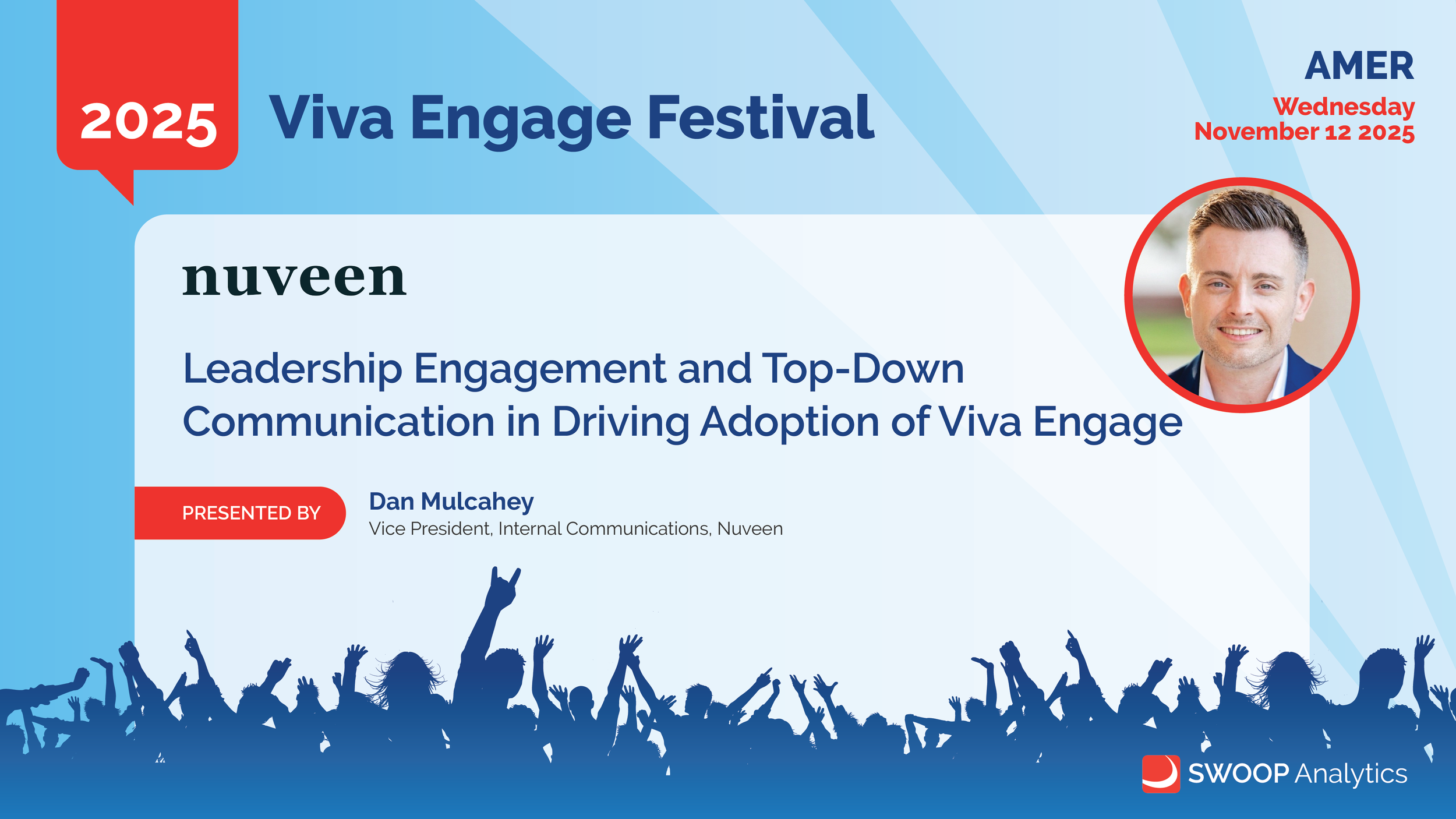From launch to lasting impact: Building trust in Reece's transition to Viva Engage
What’s this session about
Reece faced a major challenge: Workplace by Meta was shutting down, and they needed to move thousands of frontline employees to Viva Engage without losing engagement. Jordan walked through how they rebuilt trust, simplified their comms ecosystem and delivered a clean, confident transition.
-
Key Messages
They started with listening, not technology.
Hundreds of employees across branches and distribution centres were interviewed to understand how they used Workplace and what they valued.Three clear channel roles removed confusion:
Work → Store → ShareTeams = Work
SharePoint = Store
Viva Engage = Share
This reframed Engage as the place for conversation, culture and engagement.
A champion network was built using behavioural data.
Real super-users from Workplace were recruited to shape the Engage rollout and model early behaviour.No legacy content was migrated.
Reece made the bold call to start fresh. Clean groups, clean structure, clean expectations.Leaders were onboarded early and thoroughly.
Leadership conferences, 1:1 sessions and “go-live readiness checks” ensured leaders were confident and visible from day one.Support centre teams were trained intensively and early.
Merchandising, HR, tech, service desk and publishing teams all received early access and hands-on training.A structured governance model reduced clutter.
They merged redundant groups, removed duplications and introduced best-practice community management.Launch was fast, firm and deliberate.
Workplace became read-only the same day Engage went live, preventing confusion and reinforcing direction.Cultural content kept things human.
Memes, humour, introductions and fun posts immediately made Engage feel alive, not corporate.Engagement increased post-transition.
Six months later, the percentage of employees viewing “critical volume” of posts rose from 56% → 68%.
What you can take from this
Major platform transitions work when you listen before you build.
Clear channel roles kill confusion and stop tool wars.
Champion networks are your secret weapon — especially in frontline orgs.
A fresh start sometimes works better than migrating old mess.
People adopt what leaders visibly use.
Meet the speaker:
Jordan Gilliland
Internal Communications Advisor






